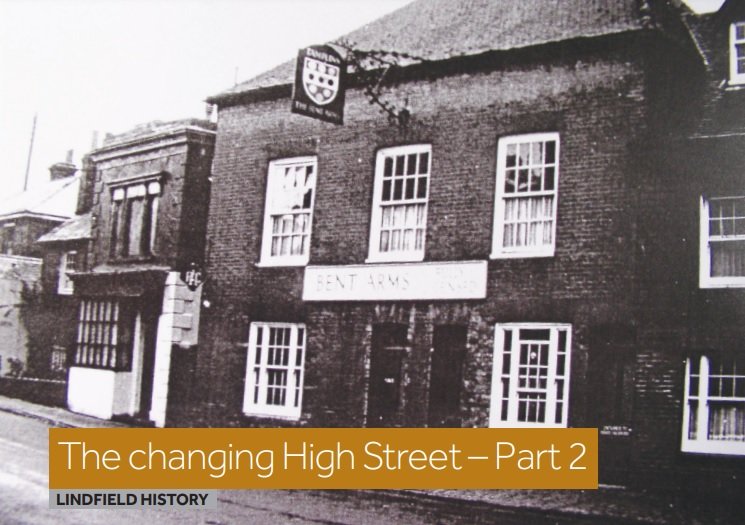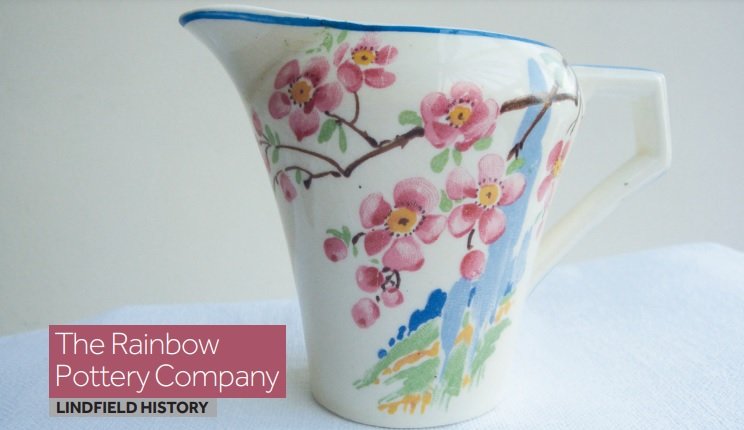By Richard Bryant, Lindfield History Project Group
Mention The Welkin to Lindfield residents today and it conjures up images of the houses with their neat gardens and well maintained grounds in the area behind the High Street and north of Hickmans Lane. Some may recall the large house of that name. ‘The Welkin’, basically meaning Vault of Heaven, was the name given to the Rectory House built on the site by Reverend Francis Hill Sewell.
In the early 1850s, Rev Francis Sewell, in preparation for his return to Lindfield from Lancashire, planned the building of a grand Rectory House for himself and Mrs Sewell. The land required for the Rectory House and its grounds were obtained by his purchase of Townlands Farm together with a couple of pieces of adjoining land.
The land ran from the rear of Townlands Farmhouse and the High Street westward to Finches Lane and bounded by Hickmans Lane. It amounted to some 20 acres; a bit bigger than The Welkin site today. A fine Gothic style house in stone, complete with turret and spire, was designed by J Clark, architect, of 13 Stratford Place, Oxford Street, London. The builder, Mr Constable of Penshurst, started work in early 1856, and on 13th May 1856 the foundation stone was laid amid much ceremony by the Bishop of Chichester. Sewell
in his speech explained that the Bishop of Chichester considered ‘£1500 would not be a large sum for a Rectory House. The one proposed would cost £3000, of which sum he (Sewell) would present one-half. It would be the residence of all future ministers, if worth accepting, otherwise it must return to his own family’. That is to say, if the parish did not contribute the other half of the £3000 cost, the house would remain owned by the Sewell family.
In October 1857, on returning from Lancashire to Lindfield, Francis Sewell moved into the house, which was lit by Hansor’s Gas. This gas was manufactured in a small private plant and stored on site. Set in parkland and surrounded by formal gardens, the house was approached from the east by a lengthy carriage drive running from the High Street. The entrance, directly opposite The Tiger, and a section of the drive exists today; the stone pillars are inscribed The Welkin. A second carriage drive ran from the junction of Finches Lane with Hickmans Lane, and again the pillars remain today.
The house stood approximately halfway across (east/ west) the site, a short way in from the footpath that runs behind The Welkin’s northern boundary. In 1861, Sewell applied to the Lindfield Parish Vestry, the parish council of its day, for the ‘entire stopping up’ of a footpath track from ‘Lindfield Town’ (i.e. the High Street next to Bower House) that ‘ran westwards across his grounds, then southwards to emerge in Hackmans Lane’. The Vestry refused permission and the footpath still exists.
Rev Francis Sewell died, unexpectedly following a short illness, on 9th October 1862. At that time The Welkin remained in his ownership and had not been conveyed to the parish church. His wish to provide a rectory house for future incumbents did not come to fruition and pursuant to a decree of the High Court in Chancery in the case of Harrison v Trotter, the property was put up for sale by auction in September 1863.
The house was described in the auction advertisement as ‘containing principal and secondary bed chambers and dressing rooms, water-closet, porch entrance leading to a spacious entrance hall and wide stone staircase, back staircase, suite of reception rooms 12ft 6ins high, with southern aspect, consisting of drawing room 23ft 6ins by 15ft 9ins, dining room 22ft by 16ft 6ins, morning room, study, lavatory, water closet, complete servants’ offices’. The grounds comprised ‘beautiful lawns, pleasure and productive gardens and meadow land, the whole containing 21a 1r 6p and possessing a considerable building frontage’. It was purchased by a Mr Griffiths.
A later occupant, from around the turn of the century, was the Dowager Countess of Tankerville. Born Lady Olivia Montagu, daughter of the 6th Duke of Manchester, she had been involved in charitable works throughout her long life. One charitable venture was the establishment of laundries to provide work and a home for women in difficult circumstances who were struggling to regain their character by honest labour. While living at The Welkin, in 1902 she built such a laundry on land adjoining Gravelye Lane. The Mid Sussex Steam Laundry was run on charitable lines by a local committee, until taken over by the Salvation Army in 1912. The adjacent laundry home called ‘Quinta’ provided accommodation for thirty female workers. In 1922, the laundry became a commercial business and traded until closure in 1972.
After the Dowager Countess of Tankerville sold The Welkin it changed hands several times and the last to occupy it as a family home were Mr & Mrs Jourdain during the 1930s. At the start of World War Two, the property was requisitioned and used by the Army as an area headquarters. Military equipment was stored in the grounds.
In 1947, Mr Noel Cook acquired the property transferring his small but successful boys’ preparatory school from Angmering. It opened as The Welkin School, a boarding and day preparatory school for boys up to 13 years of age, in September 1948. The school could accommodate about sixty pupils with boarding facilities for about half that number. The classrooms were on the ground floor of the three-storey house, with dormitories and other facilities on the first floor. The remainder of the building was mainly occupied by Mr & Mrs Cook and staff who ‘lived in’.
The school made good use of The Welkin’s extensive grounds, with an excellent sports field for cricket, football and athletics plus a tennis court and small outdoor swimming pool near today’s Green Meadows.
After the school closed in 1960, the house and outbuildings were demolished and the grounds sold. A 1960s style high-rise development was proposed but after much opposition, leading to the formation of the Society for the Preservation of Lindfield, the plans were withdrawn. Some 170 dwellings now occupy the site, with the parkland character of the grounds being retained, resulting in The Welkin being designated an Area of Townscape Character within the Lindfield Neighbourhood Plan.
First published in the October 2017 Lindfield Life.





























